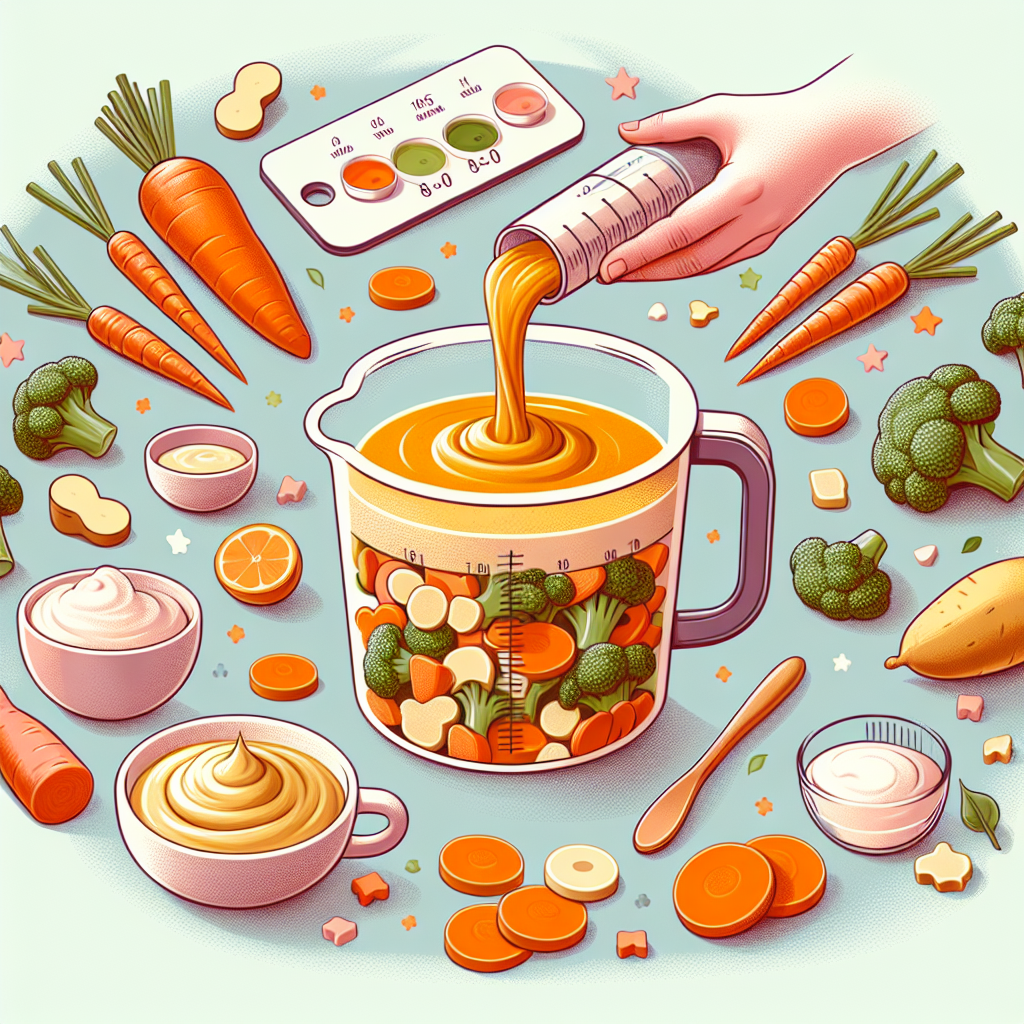Child Development: A Complete Guide to the Essential Stages
Introduction In the first months of life, the baby goes through many changes, and nutrition plays a crucial role in its healthy development. When the child reaches the age of 8-10 months, pureed vegetables become an important component in his diet. This article will provide you with a nutritious baby vegetable puree recipe along with helpful tips on how to prepare it.
Importance of Pureed Vegetables in Baby Food
Body Content: Vegetable puree is an excellent source of essential vitamins and minerals for baby's growth. Vegetables such as carrots, sweet potatoes and zucchini are rich in vitamin A, important for baby's vision, while broccoli and spinach are excellent sources of iron, crucial for cognitive development.
The very introduction of purees into the baby's diet is an essential stage. It helps the child get used to new textures and tastes, stimulating the development of oral motor skills. Purees also soothe babies' sensitive gums during teething.
Choosing the Right Vegetables for Purees
Body Content: When selecting vegetables for your baby's puree, make sure you choose fresh and seasonal vegetables as they contain the most nutrients. It's important to vary vegetables to expose baby to a wide range of tastes and textures, as well as different nutrients. Avoid vegetables that can cause allergies and always cook vegetables until they are soft enough to be easily chopped.
How to Make the Perfect Vegetable Mash
Body Content: To prepare a nutritious vegetable puree for your baby, follow the recipe below:
Ingredients: - 1 medium carrot - 1 small sweet potato - 1/2 small zucchini - 1 handful of broccoli - 200 ml of water or vegetable soup
Instructions: 1. Wash and clean all the vegetables. 2. Cut the vegetables into small pieces. 3. Place the vegetables and water or vegetable stock in a pot and bring to a boil. 4. Boil the vegetables for about 15-20 minutes or until they are very soft. 5. Strain the vegetables, but keep the liquid in which they boiled. 6. Place the vegetables in a blender and add a little of the reserved liquid to achieve the desired consistency. 7. Mash the vegetables until you get a fine puree. 8. Allow the puree to cool before serving to the baby.
Safety and Preservation of Vegetable Puree
Body Content: Food safety is essential when preparing baby food. Be sure to wash the vegetables thoroughly to remove any pesticides and bacteria. It is also important to cook the puree immediately after preparation and store it under safe conditions if not consumed immediately.
Vegetable puree can be stored in the refrigerator for up to 48 hours. For longer preservation, the puree can be frozen in special freezer bags or containers. Make sure you warm it up well before giving it to your baby again.
Including Puree in Baby's Daily Routine
Body Content: Start by introducing pureed vegetables into your baby's diet once a day and watch his reaction. As baby gets used to the new texture and taste, you can gradually increase the amount and frequency. Also, intersperse the puree with other foods your baby eats to keep variety in his diet.
Conclusion
Making a vegetable puree for babies is not only a great way to introduce essential nutrients into their diet, but it's also an opportunity to help them develop healthy tastes from an early age. By following the tips and recipe in this article, you will be able to easily prepare a nutritious and delicious puree for your child. If you have questions or need more recipes, don't hesitate to visit the rest of the sections of our store or subscribe to our newsletter for more useful information.














































































































































